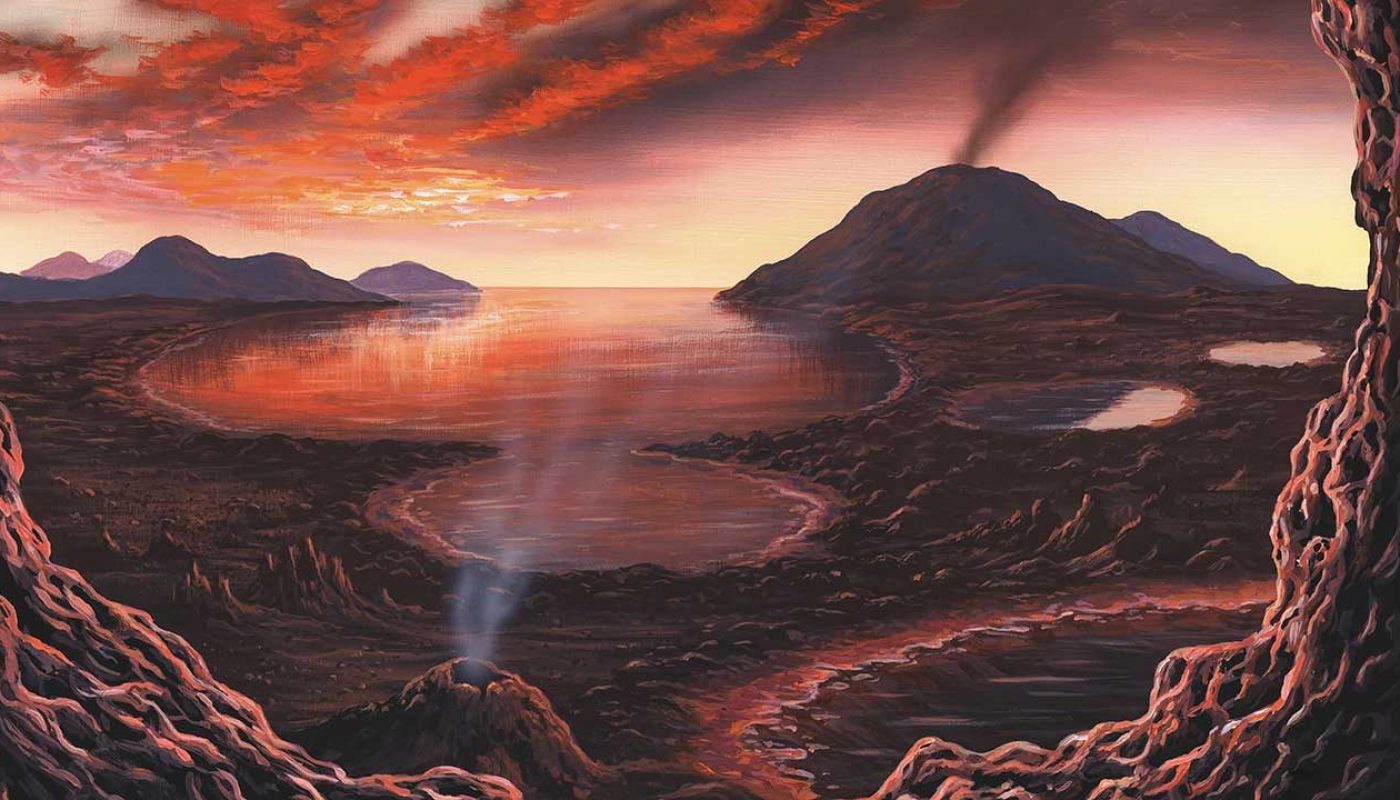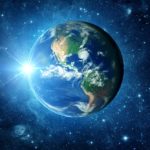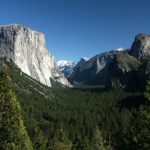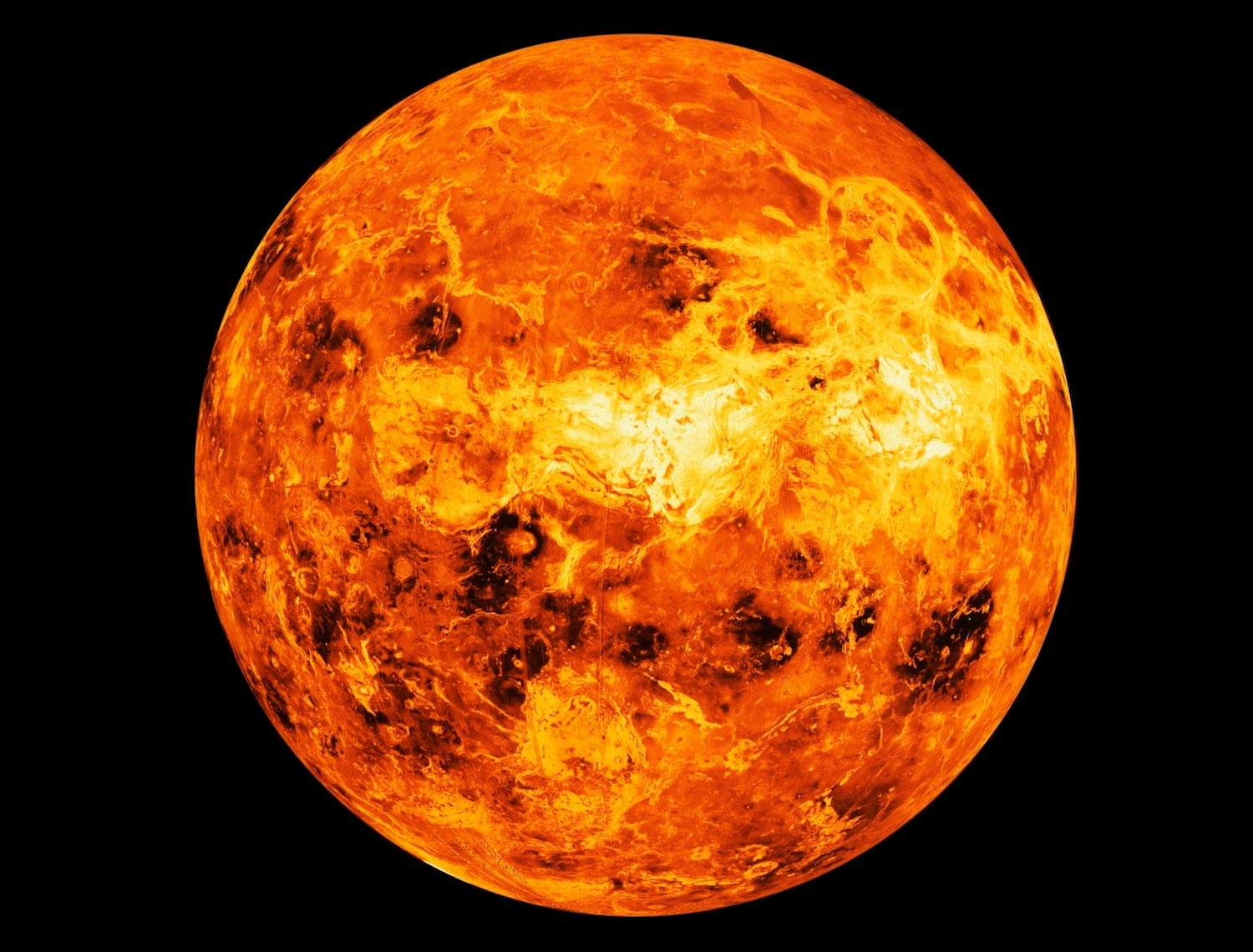Where did the Earth come from? This is an important question. A question that helps us understand our own origin as a race of sentient, thinking beings. Did the Earth always exist? Has our planet spent eternity orbiting the Sun, quietly unchanging? Has the Earth always looked like it does today, with the same mountains, streams, lakes, forests, and oceans? Or does the Earth change over time? Was the Earth always a planet, or was it built or constructed at some point in the past? If it was built, what forces caused its creation, and from where did the materials to build it come?
These are difficult questions to answer. The Earth is our home world. Before the Earth existed, there were no people. This means that there was no one around to witness its creation. At least not any humans. However, scientists, like geographers, are able to make educated guesses about how the Earth came to be. These guesses are called theories. A theory is a guess based on evidence. These guesses are made by scientists who study clues to understand new things about the world and universe around us.
What clues do scientists use to understand the creation of our home planet? The best clues that scientists have come from the study of distant young stars, and the new planets forming around them. By studying these young suns, they can catch glimpses of the creation of their new baby planets, and of their young planetary systems.
But wait a minute. Are we saying that scientists can actually watch planets as they form around distant stars? Well, not exactly. First of all, these distant planets are so far away that they are too small for us to see them using modern technology. Secondly, planets do not form over night. They take millions, and even billions of years to develop. Thus, even if we could see these planets, all we would see is how they look today. Unless we watched them for many hundreds of millions of years, we would not be able to learn much about how they evolved.
So then, how do we learn about our own planet’s birth and growth? In our Universe there are literally trillions and trillions of stars. The number of stars in our universe is vast and unimaginable. Many of these stars have a family of planets orbiting them. Each of these planetary systems is a different age. Some of them are very old, and some of them are very young.
Let’s suppose that you have never seen frogs before. You are assigned by your teacher to write a report about the life of these small green animals. How they are born, how they grow, and how long they live. Let’s suppose that you are the first person ever to study frogs. Because no one has studied frogs before you, there are no books available to teach you about their life cycle. This means that the only resource you have to help you is your own two eyes.
Now suppose that your report is due tomorrow. If you had more time, you could watch baby frogs as they grew and developed. You could take them into your room, place them in a glass container and study them, writing about each stage as they developed.
One solution might be to draw pictures of the many different frogs that you see in your local pond. You could then lay these drawings out on a table in order from smallest to largest. What do the drawings show? First, a picture of a small tadpole, followed by pictures of larger and larger tadpoles, until finally you have a picture of an adult frog.
The frog growth chart you created was completed without you having to wait and watch as one frog grew and developed. You have successfully created a theory of frog growth. How can you prove your theory? The only way to prove that your theory on frog growth is accurate would be to actually watch a single specimen pass through each step of the process. Is this necessary? That depends, but chances are pretty high that your theory is going to be proven accurate.
Now what do frogs have to do with understanding the development of the Earth? Remember that we discussed the many trillions of stars in our Universe? Like a giant backyard pond, we can look at hundreds of developing planetary systems throughout the Universe.
We can draw pictures of each one, and do our best to lay them out in order from youngest to oldest. By doing this, we can get a pretty good idea of how planetary systems develop. We see that the youngest planets develop around their parent stars in a giant cloud of dust and gas.
As the planets get older, we see that they get larger and larger by collecting dust and gas from that cloud. We see this dust and gas form a giant swirl, like a whirlpool, funneling more and more material into the planet. Over millions of years this dust and gas help the planet grow.
In older planetary systems, we see that the parent stars begins to blow stellar winds outward away from the star. These winds blow much of the dust and gas feeding the planets away, which causes the planets to stop growing.
As the planets age, they start to cool down, and their surfaces become hard. Eventually some are cool enough to allow liquid water to form, creating oceans, lakes, rivers, and streams. Other planets do not form liquid water because they remain too hot, or the liquid water eventually freezes because the planets become too cold. However, for a very small group of lucky planets, the temperatures remain just right to allow their water to remain a liquid.
As we look at what we believe are even older planets, we see these worlds being consumed by their parent stars. As these stars die, they become hotter and larger. Just prior to the death of our Sun, it will become very large and hot. As the Sun expands outward, it will completely engulf and consume the Earth, burning it up.
Today, our planet is neither young nor old. The Earth is a middle-aged planet. It has cooled sufficiently to allow liquid water to form, but has remained warm enough to sustain life, and to keep the water from freezing.
The mountains, valleys, hills, streams, rivers, and lakes that we see today are always changing. Over millions of years, new mountains form and older mountains get worn away. Lakes form, then disappear. Streams wander through the countryside, cutting deeper and deeper into the ground creating canyons, which eventually erode away.
The Earth has many billions of years left before it will be destroyed by the aging Sun. During these billions of years it will continue to change and evolve. The Earth we know today will not be the same Earth that others know millions of years in the future. Geology is a study of how the Earth changes, while Geography is a study of the Earth as it exists today.






